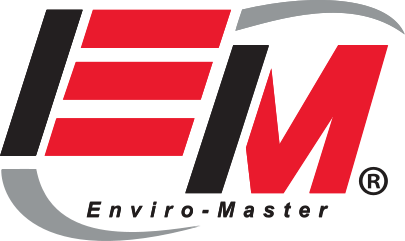For COVID-19, research is still revealing new details about how the virus is transmitted and how infections operate in the human body. The best overall virus protection policy is not to take unnecessary risks and to keep your environment as clean and disinfected as possible. Our Enviro-Master COVID-19 cleaning service is an excellent way to go beyond the latest standards of protection. These answers are collected from Centers for Disease Control (CDC), Environmental Protection Agency (EPA), National Institutes of Health (NIH), and other government and academic sources.
1. How long can Coronavirus remain on surfaces?
The type of surface is critical when answering this important question. In much of our cleaning, we are concerned with bathroom surfaces where, on materials like plastic and stainless steel, the virus can remain active for up to two or three days. On copper, though, research has found it lasts only about four hours, and 24 hours on cardboard.
2. How long can Coronavirus remain in the air?
COVID-19 can linger in the air as part of aerosol particles. This is more than direct spray from speaking, coughing, or sneezing — think of dandelion seeds that float in the air. These particles can typically remain airborne for up to three hours, landing anywhere.
3. What Disinfectants Kill COVID-19?
The EPA has compiled and published its “List N” of products that are expected to kill the COVID-19 virus on surfaces when used according to label directions. Careful application of the disinfectant is essential, and disinfectants alone are not enough. The EPA has also published a list of six steps for disinfectant use including pre-cleaning, adequate contact time, use of gloves, and locking up disinfectants when not in use to protect children. List N chemicals range from diluted bleach to quaternary ammonium, hydrogen peroxide, ethanol, and citric acid.
4. How Safe are the Disinfectants?
First, chemical disinfectants used to kill COVID-19 are not for use directly on people, and cannot be used as a substitute for hand sanitizer. Some are fast-acting and also pose an increased danger to skin, lungs, and mucous membranes. Most disinfectants have chemical properties that make them irritants. They are more likely to pose risks to workers who are in frequent contact while applying them. Once applied, the disinfectants on EPA List N are let dry before any surface use.
5. What is the Difference Between “Cleaning” and “Disinfecting” for COVID-19?
Both cleaning and disinfecting are necessary to protect against COVID-19 transmission as well as general pathogen control and cleanliness. Cleaning removes deposits of dirt and other substances that contain and host pathogens, and that also make it easier for viruses to travel as people touch the soiled surface. With the bare surface material exposed, the disinfectant can coat it thoroughly and remain in place for the required treatment time. COVID-19 cleaning service uses many methods to ensure that protection is as complete as possible.
6. Which Surfaces Should Be Cleaned and Disinfected?
This is an area where our COVID-19 cleaning service experts excel since they know the places where contamination lurks but that most people don’t clean. Any high-touch area such as door handles, faucets, trash cans (consider touch-free units), bathroom stall doors, and sink and counter surfaces are high priorities. Because the virus can be carried anywhere a sneeze or cough is directed, thorough cleaning and disinfection is necessary. One way to think of this is “cleaning with your eyes closed” — the goal is total coverage, not just “looking clean.”
7. What is the Process for Cleaning and Disinfecting Surfaces?
Initial cleaning using soap and water or detergent products to remove loose material, carefully attending to both surfaces and crevices, should be followed by a complete coating of disinfectant. The treatment is left in place for the required length of time before access to the space is resumed. Wear gloves and wash hands after removing the gloves.
8. How Does an Electrostatic Sprayer Work?
It’s not just a way to spray disinfectant, and that’s the beauty of electrostatic sprayer application. The electrostatic sprayer charges particles leaving the nozzle, basically using the principles seen with static electricity to make the particles cling to the target surface. It treats not just flat surfaces, but all the contours as well.
9. How Often Should Businesses Clean Surfaces?
For high-touch surfaces, the CDC and others recommend cleaning and disinfecting at least daily in places that the public or workers frequent. Regular visits by commercial cleaning services ensure that coverage is thorough. If there is a reason to suspect higher risk, such as a higher alert level or a medical treatment environment, it is important to clean and treat several times per day.
10. What Else Should Businesses Do to Keep Employees and Customers Safe?
Mask use keeps interpersonal transmission down, and also protects the surfaces we clean from viral risks due to coughs and sneezes. Also, it’s important to have a steady supply of hand sanitizer, paper towels, and other personal cleaning supplies. Our Enviro-Master commercial cleaning services are designed to help your business stay prepared.

